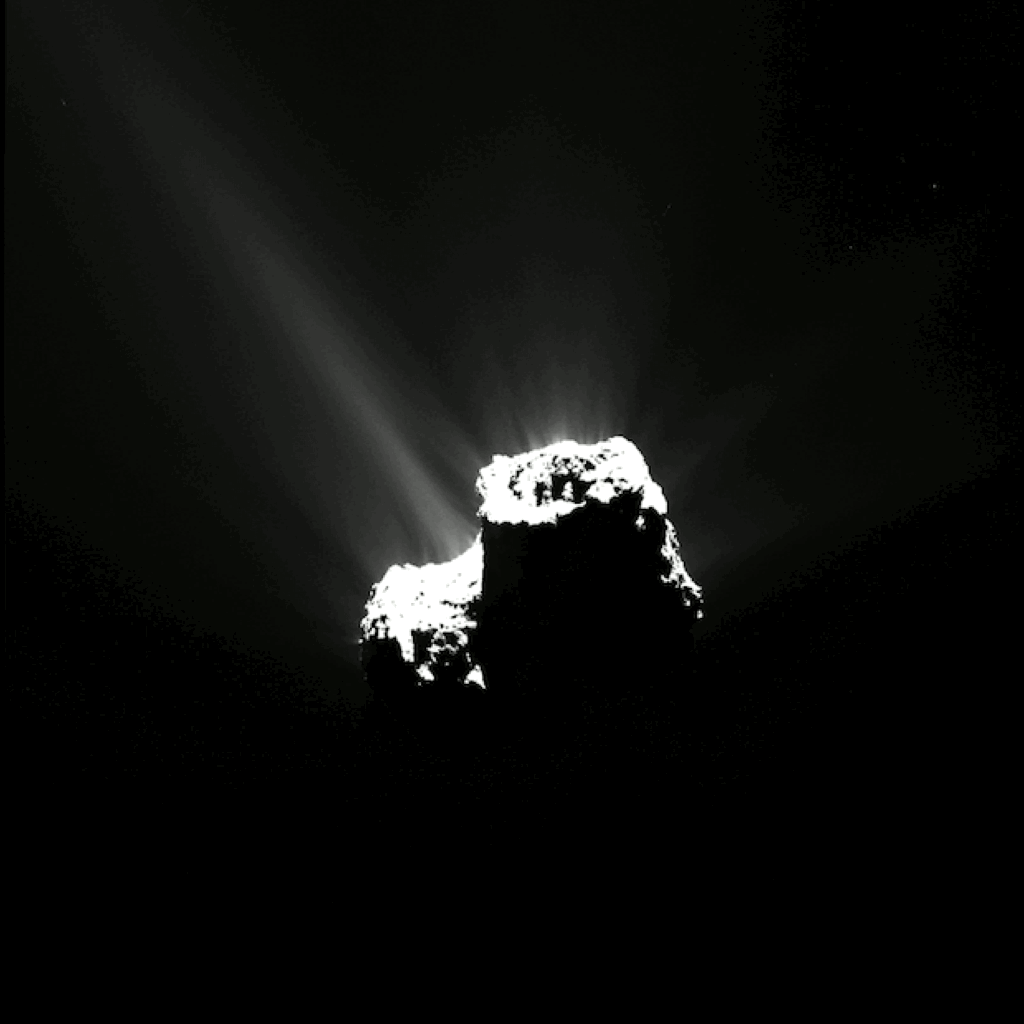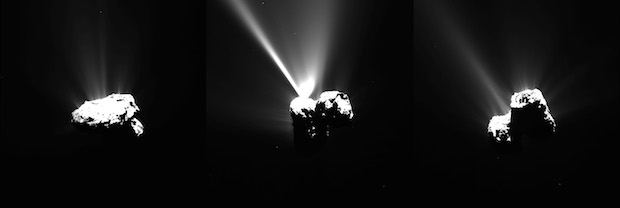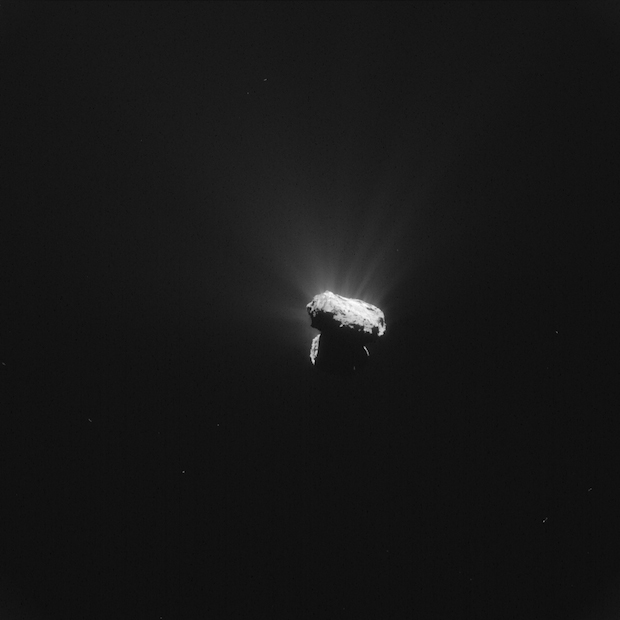Rosetta comet makes its closest approach to the sun
A comet, which became famous after a European Space Agency probe touched down there last year, made its closest approach to the sun Thursday, promising scientists a whole host of new data in the coming months.
Comet 67P/Churyumov-Gerasimenko reached what is known as perihelion, at just after 10 a.m. ET, bringing it to within 116 million miles of the sun.
"It's really a fantastic milestone which has been achieved by Rosetta today," Nicolas Altobelli, acting project scientist for the Rosetta mission, said during a Google Hangout to discuss the comet.
"This is the very first time in the history of solar system exploration that we have been following a comet from a dormant state, follow the rays of activity until it reaches a point where it's closest to the sun and receives maximum solar insulation," he said. "Beyond this obvious scientific achievement, it's also technically a masterpiece in space ingenuity. Staying alive in this kind of hostile environment is really a great achievement."
The latest milestone builds on an impressive record of findings and some amazing images, since the Philae lander launched from Rosetta arrived on the comet in November. Philaea sent back huge amounts of data in the first 60 hours before running out of power. After seven months of silence, it resumed sending sporadic signals to Earth but hasn't been heard from now for a month.
Scientists poring over the data have been able to determine among other things that magnetic fields may not have played a critical role in the solar system's formation and that asteroids, not comets, most likely delivered the lion's share of the water making up Earth's oceans.
They have also learned a lot about the comet itself, including its overall shape. (It looks like a rubber duck.) They also concluded that the comet's nucleus is covered with a range of organic compounds - mostly carbon-hydrogen and/or oxygen-hydrogen chemical groups - and that its center is made of dust, rock and frozen gas.
In the time since Rosetta arrived, the comet has travelled some 460 million miles toward the sun along its 6.5-year orbit, the increasing solar radiation heating up the nucleus and causing its frozen ices to escape as gas and stream out into space at an ever greater rate. These gases, and the dust particles that they drag along, build up the comet's atmosphere - coma - and tail.
"Activity will remain high like this for many weeks, and we're certainly looking forward to seeing how many more jets and outburst events we catch in the act, as we have already witnessed in the last few weeks," Altobelli said.
Rosetta's measurements suggest the comet is spewing up to 300 kilograms (670 pounds) of water vapor - roughly the equivalent of two bathtubs - every second. This is a thousand times more than was observed this time last year when Rosetta first approached the comet. Then, it recorded an outflow rate of just 300 grams (0.66 pounds) per second, equivalent to two small glasses of water.
Along with gas, the nucleus is also estimated to be shedding up to 1,000 kilograms (2,200 pounds) of dust per second, creating dangerous working conditions for Rosetta.
"In recent days, we have been forced to move even further away from the comet. We're currently at a distance of between 325 km and 340 km (200 and 211 miles) and this week, in a region where Rosetta's star trackers can operate without being confused by excessive dust levels - without them working properly, Rosetta can't position itself in space," Sylvain Lodiot, ESA's spacecraft operations manager, said.
As the comet reached the perihelion, scientists have documented that seasons in the past few months have changed, throwing its southern hemisphere into a short - about 10-month-long - summer after more than five and a half years in darkness. As a result, parts of the surface have been revealed that have previously been cast in shadow during Rosetta's sojourn at the comet, allowing scientists to fill in some of the missing pieces of its regional map.
They have identified four new geological regions on the southern hemisphere, which includes parts of both comet lobes, bringing the total number of regions to 23. The names of the new regions follow the naming convention of Egyptian gods and goddesses adopted for the comet: Anhur, Khonsu, Sobek and Wosret.
Not surprisingly, the average temperature on the comet increased as it headed toward the sun. When the probe first arrived, surface temperatures were recorded at around -70 degrees Celsius. By April-May 2015, temperatures rose to only a few degrees below zero Celsius, and now highs of tens of degrees above zero are forecast for the next month.
Astronomers back on Earth have been tracking the growth of the comet's tail - something Rosetta is too close to do. Images collected over the past few months with telescopes across the world show that the tail already extends more than 74,564 miles.
"Combining these big-picture views from ground-based telescopes with Rosetta's close-up study of individual jets and outbursts will help us to understand the processes at work on the comet's surface as it approaches the sun," Altobelli said.
"We aim to go back in much closer again after the activity subsides and make a survey of how the comet has changed," he said. "We also continue to hope that Philae will be able to resume its scientific operations on the surface and give us a detailed look at changes which may be occurring immediately surrounding its landing site."



